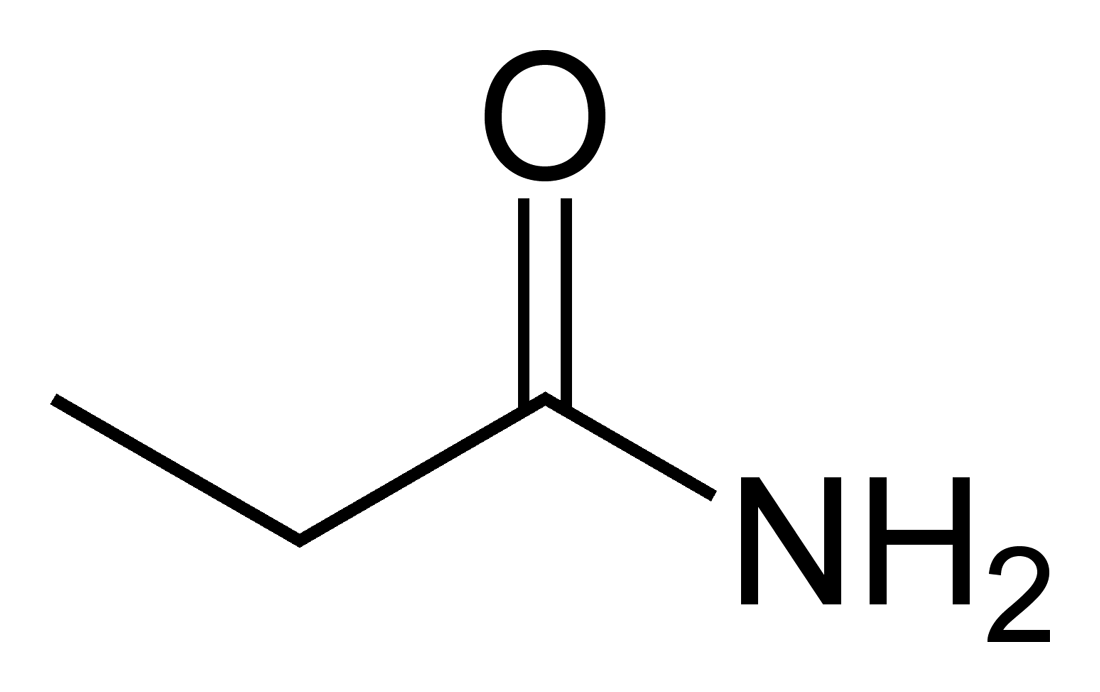
Give the structure of Propanamide.
Answer
424.5k+ views
Hint: The chemical formula for propanamide is
Complete answer: The chemical formula for propanamide is
The condensation reaction between urea and propanoic acid will produce propanamide.
Structure of Propanamide =

The organic compound urea, also known as carbamide, has the chemical formula
Propionic acid is a carboxylic acid that occurs naturally and has the chemical formula
The adsorption isotherms of acetamide and propionamide on multi-wall carbon nanotubes were determined using propionamide as an adsorbent. It was used in a reliable screening procedure to investigate biotransformations involving (+)-
Note:
The adsorption isotherms of acetamide and propionamide on multi-wall carbon nanotubes were determined using propionamide as an adsorbent. It was used in a reliable screening procedure to investigate biotransformations involving (+)-
Complete answer: The chemical formula for propanamide is
The condensation reaction between urea and propanoic acid will produce propanamide.
Structure of Propanamide =

The organic compound urea, also known as carbamide, has the chemical formula
Propionic acid is a carboxylic acid that occurs naturally and has the chemical formula
The adsorption isotherms of acetamide and propionamide on multi-wall carbon nanotubes were determined using propionamide as an adsorbent. It was used in a reliable screening procedure to investigate biotransformations involving (+)-
Note:
The adsorption isotherms of acetamide and propionamide on multi-wall carbon nanotubes were determined using propionamide as an adsorbent. It was used in a reliable screening procedure to investigate biotransformations involving (+)-
Recently Updated Pages
Express the following as a fraction and simplify a class 7 maths CBSE

The length and width of a rectangle are in ratio of class 7 maths CBSE

The ratio of the income to the expenditure of a family class 7 maths CBSE

How do you write 025 million in scientific notatio class 7 maths CBSE

How do you convert 295 meters per second to kilometers class 7 maths CBSE

Write the following in Roman numerals 25819 class 7 maths CBSE

Trending doubts
Give 10 examples of unisexual and bisexual flowers

Draw a labelled sketch of the human eye class 12 physics CBSE

Differentiate between homogeneous and heterogeneous class 12 chemistry CBSE

Differentiate between insitu conservation and exsitu class 12 biology CBSE

What are the major means of transport Explain each class 12 social science CBSE

Draw a diagram of a flower and name the parts class 12 biology ICSE




